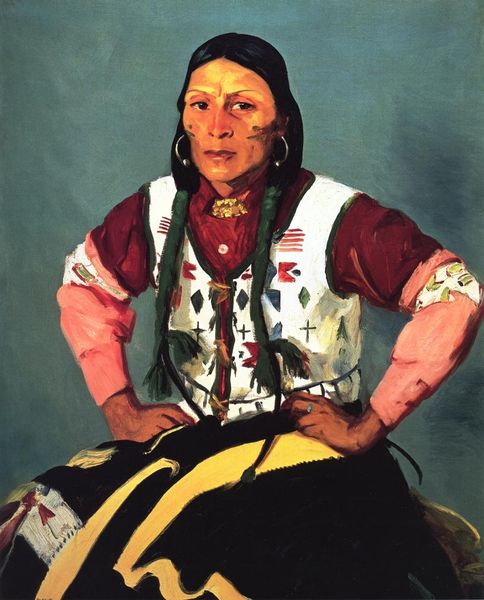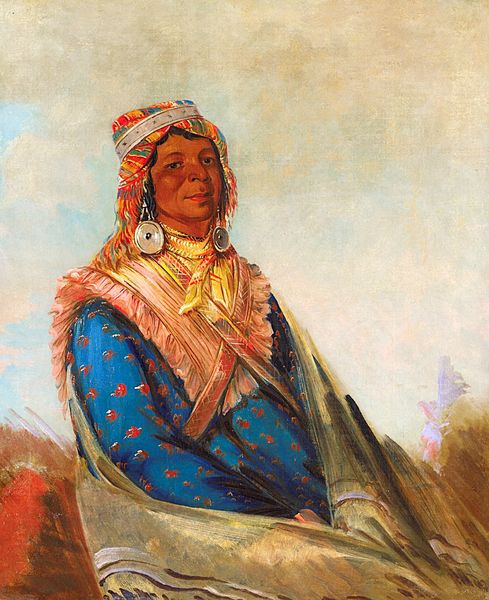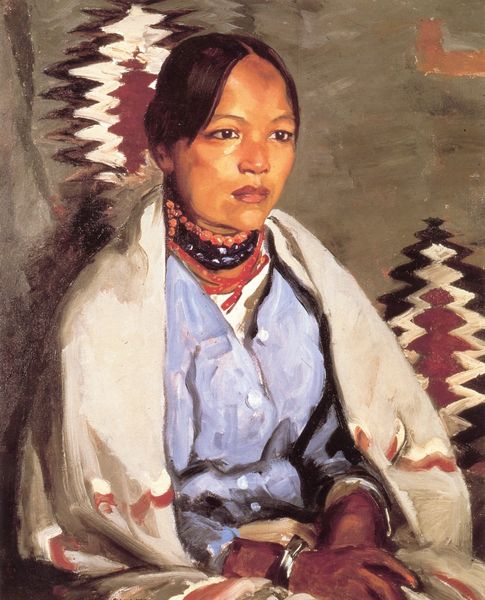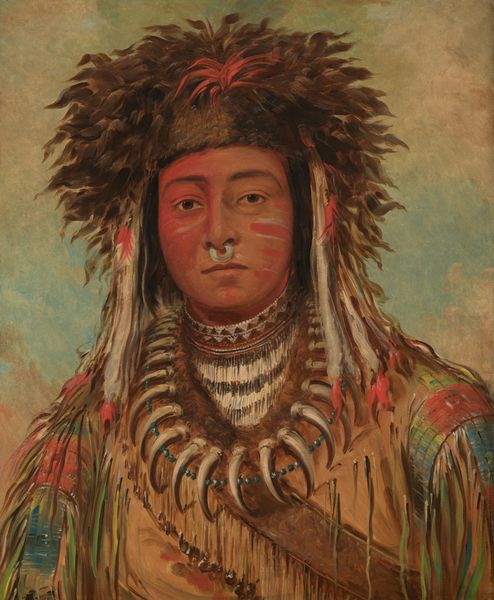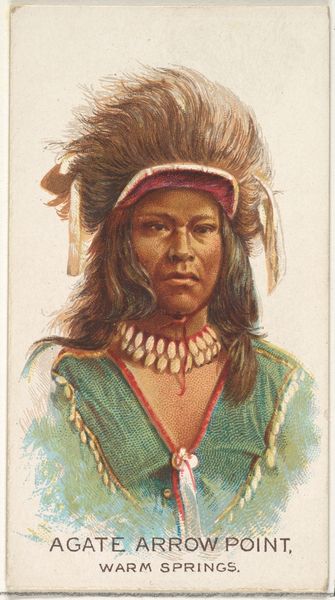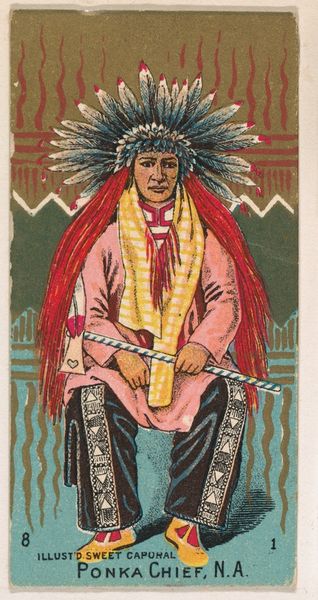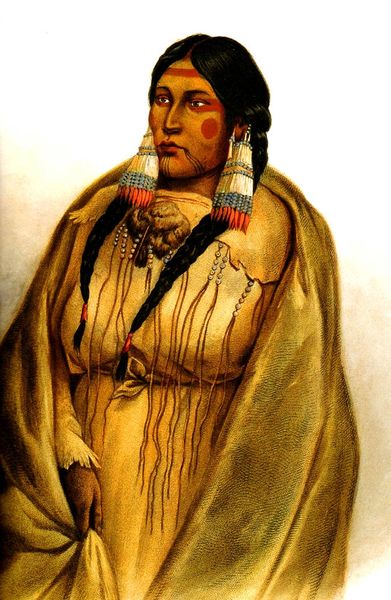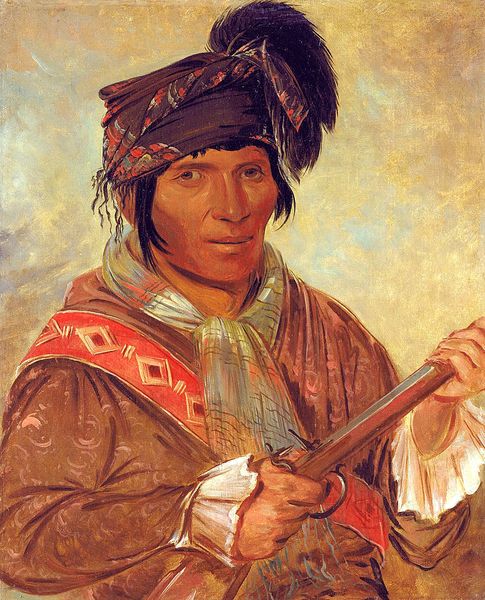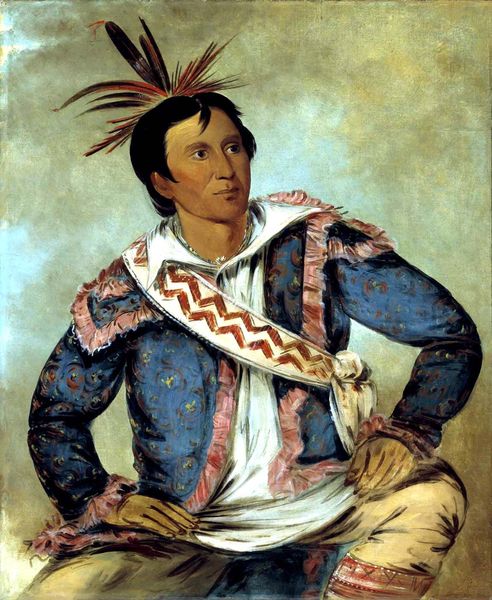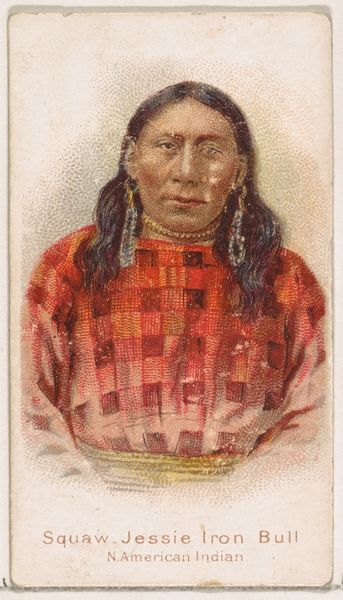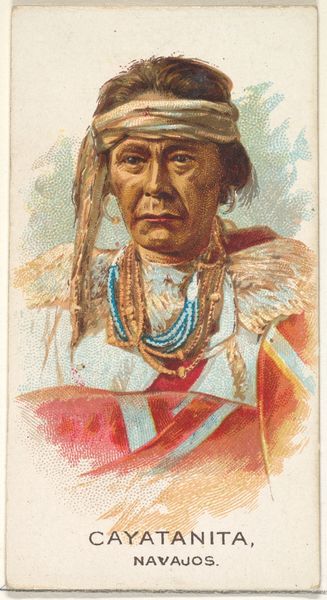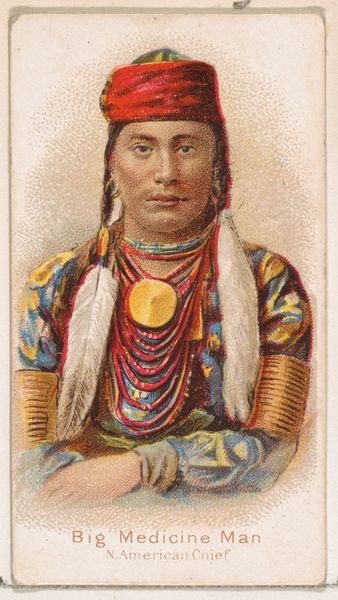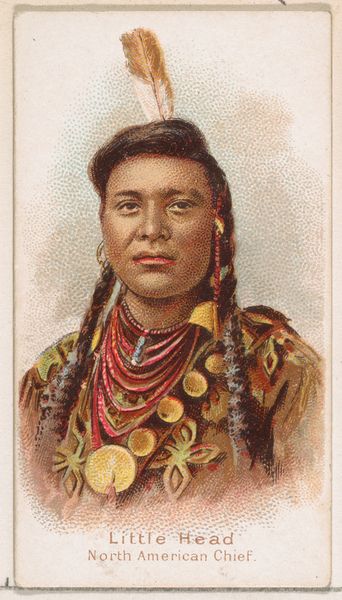
oil-paint
#
portrait
#
oil-paint
#
figuration
#
oil painting
#
portrait drawing
#
facial portrait
#
portrait art
#
fine art portrait
Copyright: Public domain
Curator: Here we have George Catlin's oil painting from 1834, a portrait of Mò-sho-là-túb-bee, a chief whose name chillingly translates to "He Who Puts Out and Kills." Quite the title, wouldn't you say? Editor: It’s...intense, yes, both the title and the presence he exudes. Though, unexpectedly, I'm struck by how tactile everything looks. The sheen of the metal gorget, the patterned fabric, even the feathery fan—they practically invite a touch. What do we know about these objects, their origins? Curator: That's a wonderful observation! Catlin, you see, aimed to document what he saw as a vanishing way of life, traveling extensively. I suspect much of this attire would have been acquired through trade. Notice the blend: the European-style collar under all of the traditional adornments? Fascinating, isn’t it, how different cultures met and influenced one another through materials and adornments? Editor: Absolutely! This isn't just a static representation of indigenous culture but also a testament to exchange, labor, and adaptation. It's tempting to imagine how Mò-sho-là-túb-bee obtained the collar and beads. What about the pipe—could this possibly signal rituals of diplomacy or perhaps just a moment of calm? Curator: Precisely. It's almost like holding a little piece of his power in his hands. Do you sense a subtle melancholy in his expression, by the way? A wisdom perhaps touched by sadness, or is it just my own romantic leanings peeking through? Editor: I think that hint of melancholy might speak more to the history being captured. The materials – the canvas, the oil paint itself – they all became implicated in the colonial project, documenting a culture as it underwent irrevocable changes. There's a real tension between the beauty Catlin finds and the forces reshaping Mò-sho-là-túb-bee’s world. Curator: So eloquently put. It is a dance between admiration and appropriation, isn’t it? Ultimately, this portrait offers a window into a life, a moment, a story interwoven with so much more. Editor: Yes, a story etched not just in pigment on canvas, but in the threads, the metal, the very substances that linked this chief to a broader world, marked both by promise and profound loss.
Comments
No comments
Be the first to comment and join the conversation on the ultimate creative platform.
